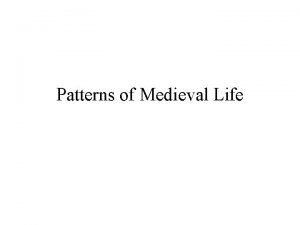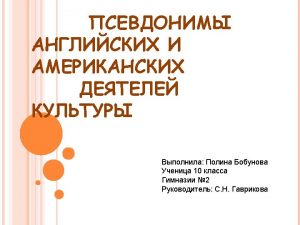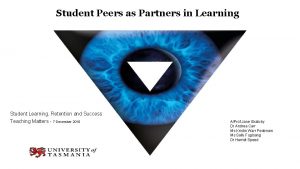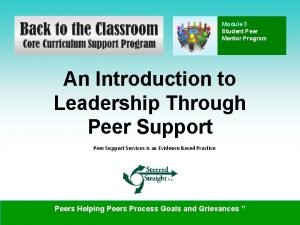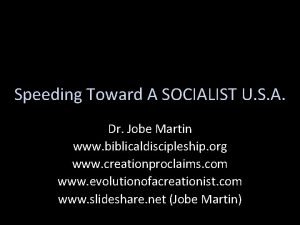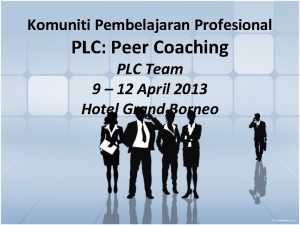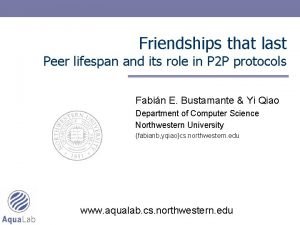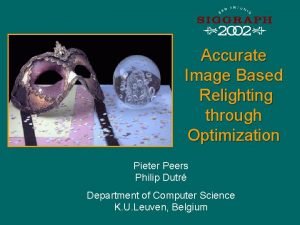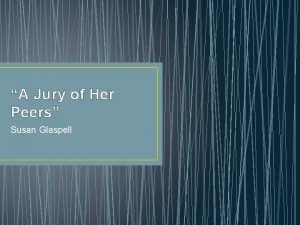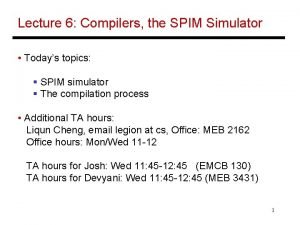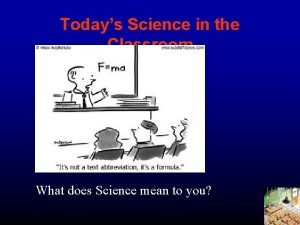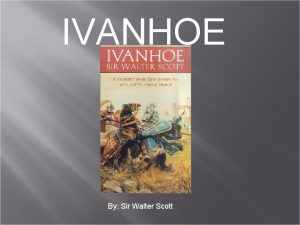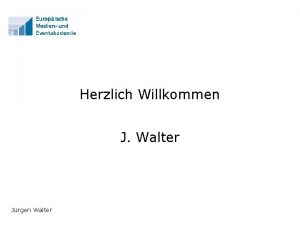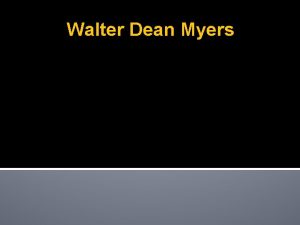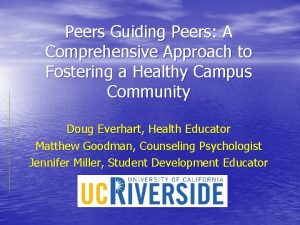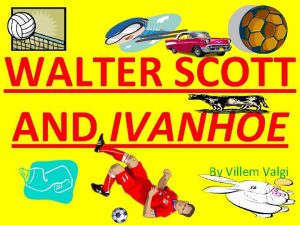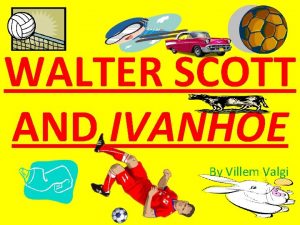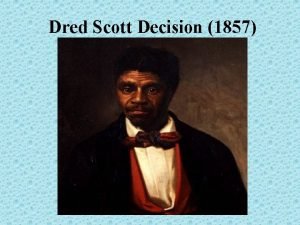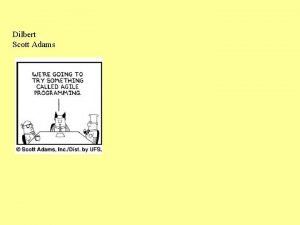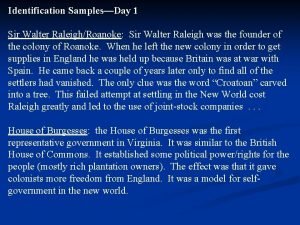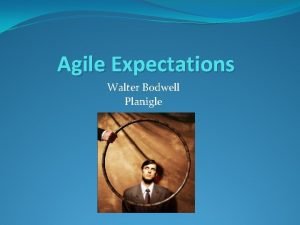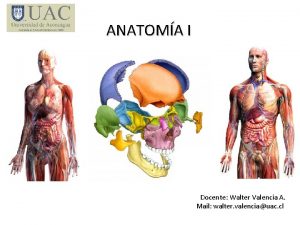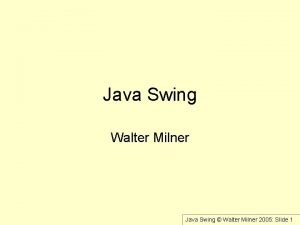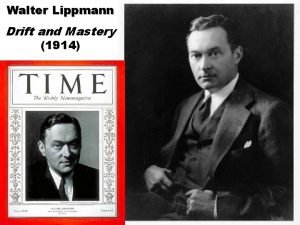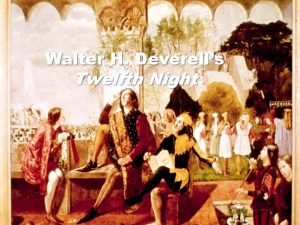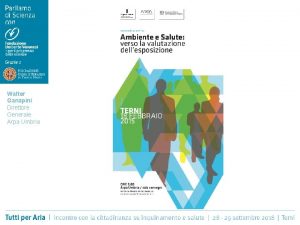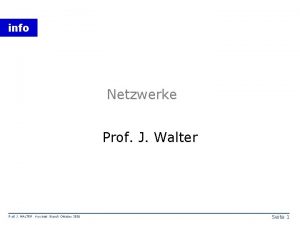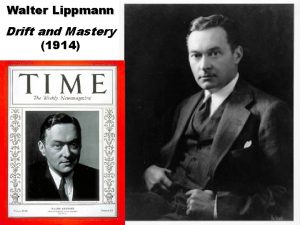Todays session The peers heirs of Walter Scott










![The return of the repressed “As [Freud] puts it in Introductory Lectures on Psycho. The return of the repressed “As [Freud] puts it in Introductory Lectures on Psycho.](https://slidetodoc.com/presentation_image_h/1873c7a7d9350786b2168e37f8cc29e9/image-11.jpg)
![“ […] Our instincts and primitive impulses are thus repressed; however, Freud believed that “ […] Our instincts and primitive impulses are thus repressed; however, Freud believed that](https://slidetodoc.com/presentation_image_h/1873c7a7d9350786b2168e37f8cc29e9/image-12.jpg)













![Oral narrator’s rejection of Enlightenment learning “ […] and there were folk even that Oral narrator’s rejection of Enlightenment learning “ […] and there were folk even that](https://slidetodoc.com/presentation_image_h/1873c7a7d9350786b2168e37f8cc29e9/image-26.jpg)






![Writing in the domestic sphere [U]p to this date (1888), I have never been Writing in the domestic sphere [U]p to this date (1888), I have never been](https://slidetodoc.com/presentation_image_h/1873c7a7d9350786b2168e37f8cc29e9/image-33.jpg)



- Slides: 36

Today’s session • The peers & heirs of Walter Scott (1771 -1832) – James Hogg (1770 – 1835) – Margaret Oliphant (1828 -1897) – Robert Louis Stevenson (1850 -1894) • The supernatural in Scottish fiction: the return of the repressed?

Edinburgh as a publishing centre

The rise of Scottish print culture • Encyclopedia Britannica – 1 st edn published 1768 -71 – 4 th edition (1810) grew to 40 volumes; contributors included Walter Scott (on ‘Chivalry’) • Edinburgh Review (founded 1802) • Blackwood’s Edinburgh Magazine (1817) • Chambers’s Edinburgh Journal (1832) – Monthly literary reviews – Main publishing outlets of the 1800 s – Novels published in serial format

‘Maga’ • Published work by – – John Gibson Lockhart (editor) James Hogg John Wilson (‘Christopher North’) John Galt Later… – – – George Eliot Margaret Oliphant (author & critic) Anthony Trollope Joseph Conrad Arthur Conan Doyle

What is mass market fiction for? • Romance? • An explanation of history or society? • An exploration of mental or spiritual states? • To scare the living daylights out of you?

The sense of Enlightenment progress “When, in such a period of society as that in which we live, we compare our intellectual acquirements, our opinions, manners, and institutions, with those which prevail among rude tribes, it cannot fail to occur to us as an interesting question, by what gradual steps the transition has been made from the first simple efforts of uncultivated nature, to a state of things so wonderfully artificial and complicated. ” -- The Collected Works of Dugald Stewart, ed. Sir William Hamilton, 10 vols. (Edinburgh, 1858), X, 32 -34.

And yet… • Henry Fuselli, The Nightmare (1781)

Roots of Gothic fiction Horace Walpole: Castle of Otranto (1764) Anne Radcliffe Mysteries of Udolpho (1794) Matthew Lewis The Monk (1796)

Gothic allusions in Scott’s Waverley: Historical romance v. Gothic romance Had I, for example, announced in my frontispiece, 'Waverley, a Tale of other Days, ' must not every novelreader have anticipated a castle scarce less than that of Udolpho, of which the eastern wing had long been uninhabited, and the keys either lost, or consigned to the care of some aged butler or housekeeper, whose trembling steps, about the middle of the second volume, were doomed to guide the hero, or heroine, to the ruinous precincts? -- Introductory

How do we read popular fiction? • http: //www. cla. purdue. edu/english/theory/
![The return of the repressed As Freud puts it in Introductory Lectures on Psycho The return of the repressed “As [Freud] puts it in Introductory Lectures on Psycho.](https://slidetodoc.com/presentation_image_h/1873c7a7d9350786b2168e37f8cc29e9/image-11.jpg)
The return of the repressed “As [Freud] puts it in Introductory Lectures on Psycho. Analysis (First Lecture), “we believe that civilization is to a large extent being constantly created anew, since each individual who makes a fresh entry into human society repeats this sacrifice of instinctual satisfaction for the benefit of the whole community” (15. 23). What happens instead, as he goes on to explain, is that those “primitive impulses, ” of which the sexual impulse is the strongest, are sublimated or “diverted” towards other goals that are “socially higher and no longer sexual” (15. 23). […]”
![Our instincts and primitive impulses are thus repressed however Freud believed that “ […] Our instincts and primitive impulses are thus repressed; however, Freud believed that](https://slidetodoc.com/presentation_image_h/1873c7a7d9350786b2168e37f8cc29e9/image-12.jpg)
“ […] Our instincts and primitive impulses are thus repressed; however, Freud believed that the sexual impulse was so powerful that it continually threatened to “return” and thus disrupt our conscious functioning (hence the now-famous term, “the return of the repressed”). ” Felluga, Dino. "Modules on Freud: On the Unconscious. " Introductory Guide to Critical Theory. [Jan 31, 2011]. Purdue U. [Accessed May 3, 2013]. http: //www. purdue. edu/guidetotheory/psychoanalysis/freud 2. html

Psychoanalysis and literature… • Fiction shares with the Unconscious a symbolic organisation. • ‘Civilisation’ demands the repression of the individual’s unconscious instinctive desires. • ‘Maturity’ involves a separation from animal instincts and a recognition of the ‘other’ • In everyday life, these instinctive desires ‘return’ in the form of dreams, slips of the tongue, etc. • In fiction, these desires ‘return’ in the form of fantasy, the grotesque, ghosts and demons. • So…. what exactly is being repressed?

Analysing fantastic fiction • What is the nature of the supernatural being? • What is its relationship to the protagonist(s)? • How does the manifestation of the supernatural being relate to standard psychological themes, e. g. – The formation of sexuality – The ‘othering’ of the primitive/animal – Reality versus dreams?

James Hogg’s Justified Sinner • James Hogg (1770 -1835) • Early life as farm-labourer (‘The Ettrick Shepherd’) • Started writing poetry and collecting ballads; later moved to writing novels. • Befriended Walter Scott and became part of his literary circle (including John Galt) • The Private Memoirs and Confessions of a Justified Sinner (1824)

A narrative of doubleness… • The story is told twice, first by an Editor and then in the ‘Sinner’s’ (Robert’s) own words. • Set in the late 17 th century • Rabina and George marry and have 2 sons: George Jnr and Robert. • Suggested that Robert is actually the son of Rabina’s spiritual adviser, Rev Wringhim. • Robert takes Wringhim’s name and is inducted into the Calvinist belief in ‘the elect’.

Doubleness and obsession? • Robert starts stalking George. At one point he nearly throws George from a cliff (Arthur’s Seat in Edinburgh). • George is stabbed to death in a tavern. A prostitute identifies Robert as the attacker, aided by a mysterious man, the double of George’s friend. • Robert disappears before his arrest.

The sinner’s confession • In the second part of the novel, the story is told from Robert’s perspective. • The new element in the story is Robert’s meeting with a mysterious stranger, Gil-Martin, after his induction into the elect. • Gil-Martin tempts Robert into murdering George. • Robert begins to doubt Gil-Martin, who appears to take his form to commit other crimes. • In despair, Robert commits suicide and his memoir is found in his grave.

Reality or fantasy? • Like many Gothic novels, Hogg’s fiction was presented as an authentic document: – Published anonymously – Includes a reference to a real person (Hogg) – Original publication was advertised by a letter in Blackwood’s Magazine (written by Hogg) advertising the discovery of Wringhim’s memoir • Is Gil-Martin real or a fantasy within the novel? – The prostitute sees him but there are indications that he is a figment of Wringhim’s imagination.

Uncertain perspectives • The Editor’s and Sinner’s narratives do not match in details. • Robert, as he descends into madness, is not a reliable narrator.

Who or what is Gil-Martin? • “O, you must have a surname too, must you!. . . Very well, you may call me Gil-Martin. It is not my Christian name; but it is a name which may serve your turn. ” • “I have no parents save one, whom I do not acknowledge; therefore pray drop that subject. . . ” • Gil-Martin = servant of Martin [‘St Martin’s running footman’ = euphemism for the devil in folklore, also Urquhart’s Rabelais (ch. 23)]

A psychoanalytic reading… “As Ian Duncan points out, Hogg understood himself emerging from pre-modern, largely pre-literate rural folk culture, its authentic primitivism distinct from a politically aware rural working class of south-west Scotland associated with Burns. Hogg’s concern with delirium, paranoia and obsession expresses his critical engagement with post-Enlightenment modernity and with rural traditions, his sense of being inside and outside both of these temporalities. ” -- Brewster (80)

Gil-Martin & Robert as repressed • Gil-Martin symbolises the return of – demonic forces ‘banished’ by the Enlightenment • Robert symbolises the return of – fractured (‘pre-Union’) psyche – religious extremism in an increasingly secular society – madness in the Age of Reason

Pre-Union Scotland as the repressed… • ‘Thrawn Janet’ by Robert Louis Stevenson (1881) • Short story, an ‘oral’ tale in Scots, framed by a ‘literate’ introduction in English. • Story of a Presbyterian minister, Mr Soulis, who apparently witnesses the reanimation of a woman (Janet) through diabolic possession.

From Hesse, 2010 Frame Embedded Narrative English Scots Literacy Orality Mid-18 th Century Late-17 th / Early-18 th Century Enlightenment Folklore, Superstition
![Oral narrators rejection of Enlightenment learning and there were folk even that Oral narrator’s rejection of Enlightenment learning “ […] and there were folk even that](https://slidetodoc.com/presentation_image_h/1873c7a7d9350786b2168e37f8cc29e9/image-26.jpg)
Oral narrator’s rejection of Enlightenment learning “ […] and there were folk even that said the Lord had left the college professors to their ain devices, an' the lads that went to study wi' them wad hae done mair and better sittin' in a peatbog, like their forebears of the persecution, wi' a Bible under their oxter and a speerit o' prayer in their heart. There was nae doubt, onyway, but that Mr. Soulis had been ower-lang at the college. ”

From Hesse, 2010 The English frame to the Scots-narrated story represents an important distancing device vis-a-vis the supernatural events described in the embedded narrative. Taking his cue from an idea in Freud’s ‘Das Unheimliche’, [The Uncanny] Tzvetan Todorov persuasively argued that the ‘pure fantastic’ requires that the reader be kept in permanent suspension between a supernatural explanation of the events depicted (the narrator is reliable; the ghosts are real) and a rational one (there are no ghosts; the narrator is mad). To put it differently: a story of the ‘pure fantastic’ requires unreliable narration. In [Thrawn Janet], the use of dialect in the embedded narrative persistently reminds the reader of the narrator’s subjectivity and hence of his doubtful reliability.

What about the women? • Margaret Oliphant (1828 -1897) • First novel published in 1849 • Meets William Blackwood (1851) and begins a long association with ‘Maga’ as contributor and critic. • 1859: Husband dies of consumption; her writing career now supports her and her three children. One dies; her brother is financially ruined and she starts supporting his family too. • All her children pre-decease her; she continues writing till her death at the age of 69.

‘The Library Window’ • One of Oliphant’s final stories (1896). • A young girl sees the image of a young man, framed by a library window – reading. She discovers that the window has been bricked up and she has seen a ghost.

Who is the ghost? • A young man who was attracted to the girl’s ancestor and who waved to her from the library across the street. • The man who was murdered by the ancestor’s brothers.

How can we ‘read’ this ghost? • Yearning for sexual companionship … the impossible object of desire • Yearning for scholarly freedom … the ‘room of one’s own’ and time for study and writing. • Voyeuristic account of the ‘act of reading’… ‘the proximity of textuality and sexuality’ (Heller, 26)

How was it for you? “It was like a fascination. I could not take my eyes from him and that little scarcely perceptible movement he made, turning his head. I trembled with impatience to see him turn the page, or perhaps throw down his finished sheet on the floor, as somebody looking into a window like me once saw Sir Walter do, sheet after sheet. I should have cried out if this Unknown had done that. I should not have been able to help myself, whoever had been present; and gradually I got into such a state of suspense waiting for it to be done that my head grew hot and my hands cold. ”
![Writing in the domestic sphere Up to this date 1888 I have never been Writing in the domestic sphere [U]p to this date (1888), I have never been](https://slidetodoc.com/presentation_image_h/1873c7a7d9350786b2168e37f8cc29e9/image-33.jpg)
Writing in the domestic sphere [U]p to this date (1888), I have never been shut up in a separate room, or hedged off with any observances. My study, all the study I have ever attained to, is the little second drawing-room where all the (feminine) life of the house goes on; and I don't think I have ever had two hours undisturbed (except at night, when everybody is in bed) in my whole literary life. – Autobiography (24); quoted in Heller, (24)

Recurring themes • Dream or reality: is the ‘library window’ a figment of the unreliable narrator’s hormone-driven imagination? But when the ghost opens the window at one point, people in the street seem to hear it… • Elsewhere, Oliphant wrote critically of the rise of the ‘New Woman’, professionally independent and sexually more liberated than her predecessors. The yearning for identification with the impossible male domain of scholarship and art may be her own ‘return of the repressed. ’

The non-hegemonic strikes back… • The 19 th century sees ‘older Scotland’ (Scotsspeaking, superstitious, irrational, feminized or emasculated) • The ‘repressed’ Scotland returns in Gothic fantasies… • But as ‘The Library Window’ suggests, repressed anxieties can look forwards as well as backwards, too – towards a fear of modernity… and the yearning for impossible desires. • Cue the entrance of Dr Jekyll…

References • Brewster, Scott. "Borderline experience: madness, mimicry and Scottish Gothic. " Gothic Studies 7, no. 1 (2005): 79 -86. • Felluga, Dino. "Modules on Freud: On the Unconscious. " Introductory Guide to Critical Theory. [Jan 31, 2011]. Purdue U. [Accessed May 3, 2013]. http: //www. purdue. edu/guidetotheory/psychoanalysis/freud 2. html • Heller, Tamar. "Textual Seductions: Women's Reading and Writing in Margaret Oliphant's" The Library Window". " Victorian Literature and Culture 25 (1997): 23 -38. • Hesse, Beatrix. “The unco tales of Robert Louis Stevenson in German Translation. ” International Journal of Scottish Literature, 7 (2010): http: //www. ijsl. stir. ac. uk/issue 7/hesse. pdf
 Main characters in the westing game
Main characters in the westing game Rome's three heirs
Rome's three heirs Walter scott romanzo storico
Walter scott romanzo storico Mark twain
Mark twain Lochinvar by sir walter scott
Lochinvar by sir walter scott The father of historical novel
The father of historical novel Peers as partners in learning
Peers as partners in learning Peers for hope house
Peers for hope house Peers goals
Peers goals Kurt vonnegut socialism
Kurt vonnegut socialism This is an informal language used by peers and friends
This is an informal language used by peers and friends Ciri ciri coaching dan mentoring
Ciri ciri coaching dan mentoring Pasca coaching
Pasca coaching Mary peers
Mary peers What is peers and friends
What is peers and friends Formal vs informal language
Formal vs informal language Connected peers meaning
Connected peers meaning Beza coaching dan mentoring
Beza coaching dan mentoring Pieter peers
Pieter peers Setting of a jury of her peers
Setting of a jury of her peers Date frui
Date frui Handcuff nomenclature quiz
Handcuff nomenclature quiz Todays objective
Todays objective Todays concept
Todays concept Todays globl
Todays globl Todays science
Todays science Safe online talk
Safe online talk Planetary positions today
Planetary positions today Todays sabbath lesson
Todays sabbath lesson Todays health
Todays health Organelle jeopardy
Organelle jeopardy Todays with apostrophe
Todays with apostrophe Welcome to today's class
Welcome to today's class Good morning pupils
Good morning pupils Todays objective
Todays objective Todays weather hull
Todays weather hull Todays whether
Todays whether

